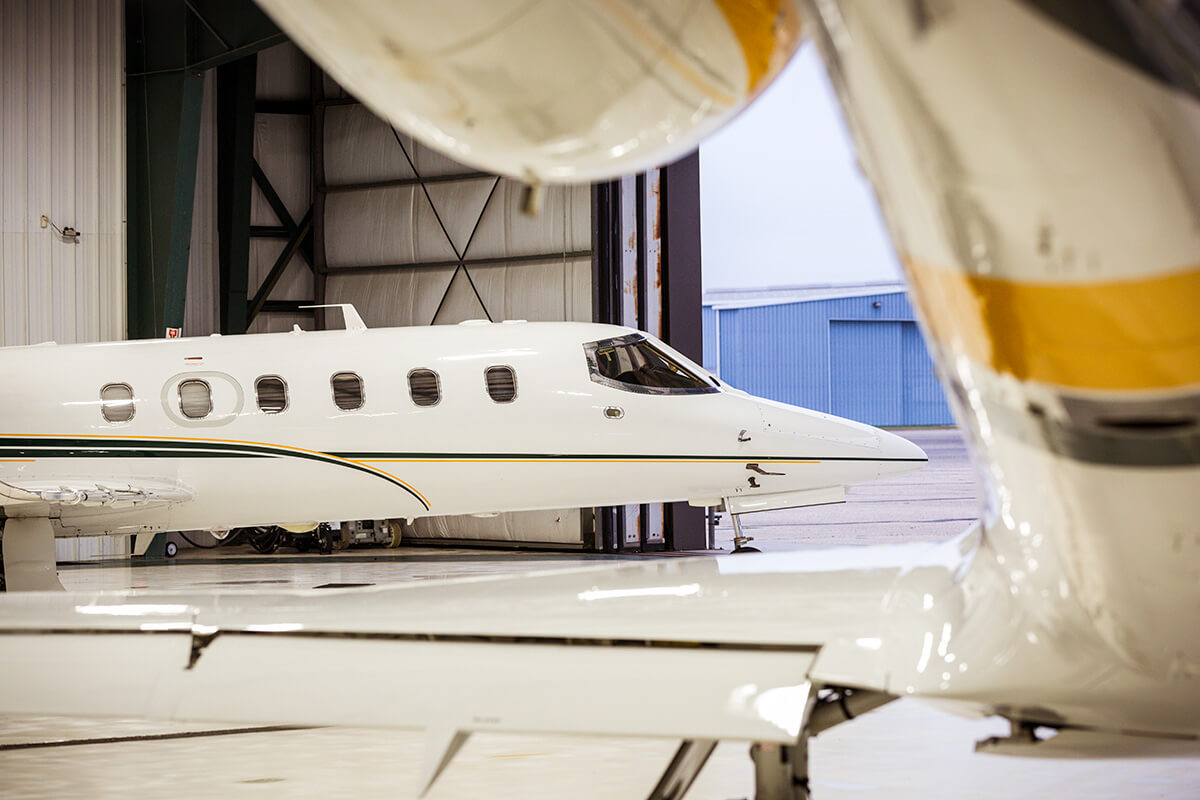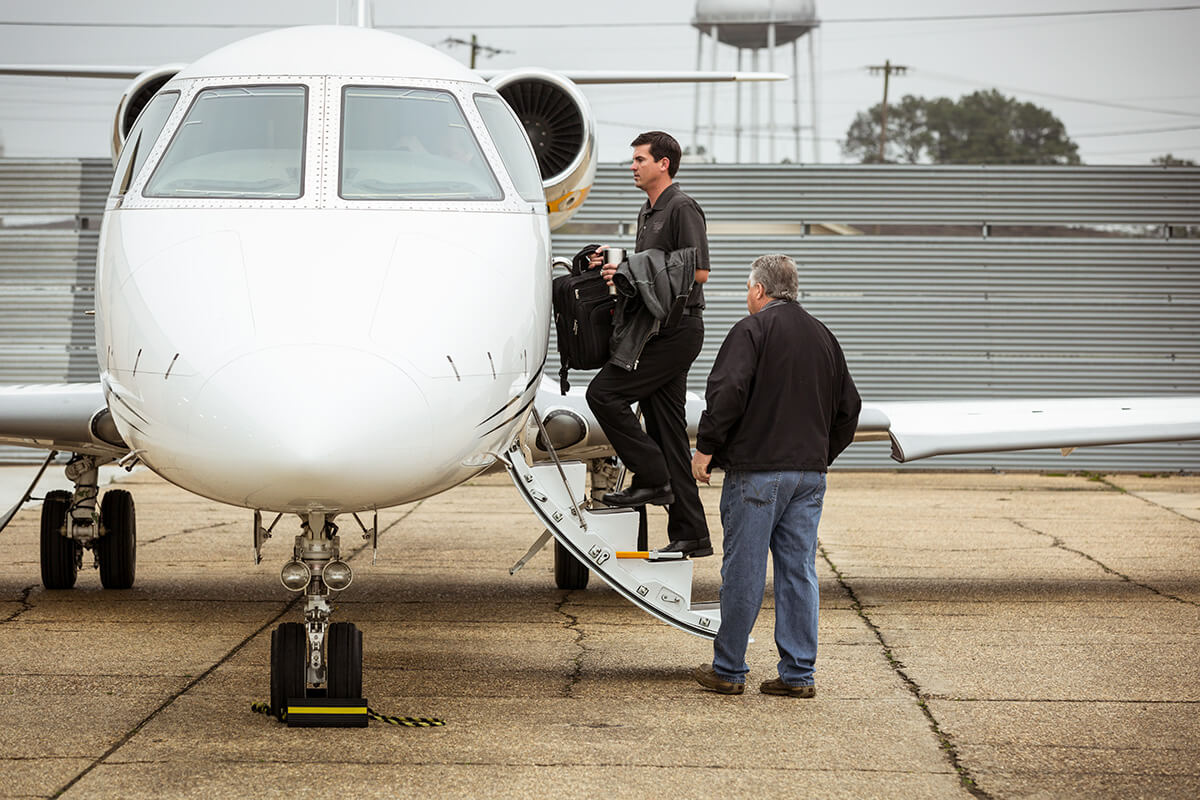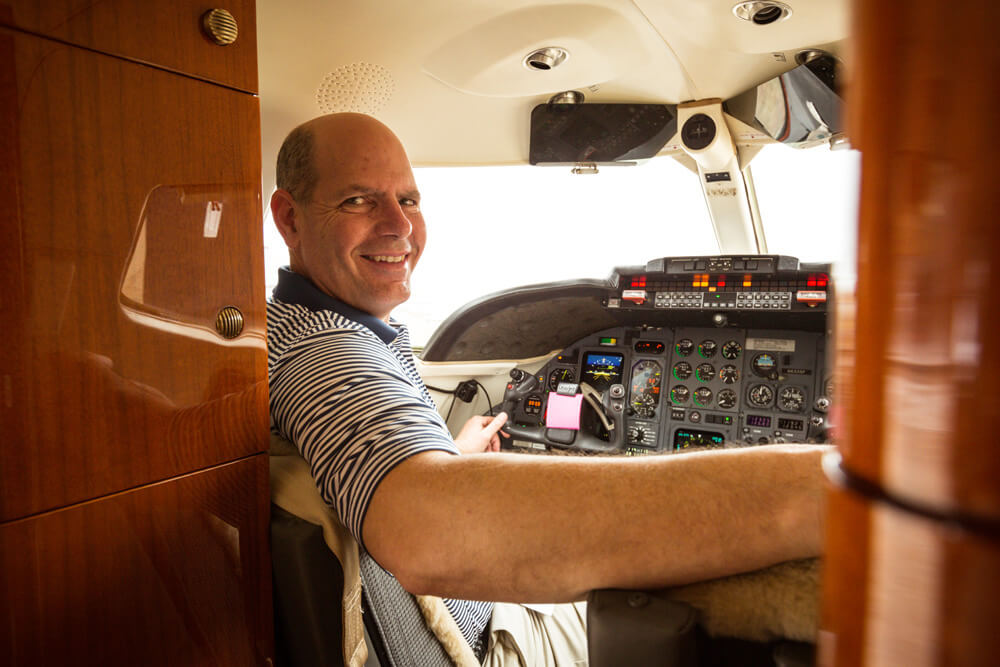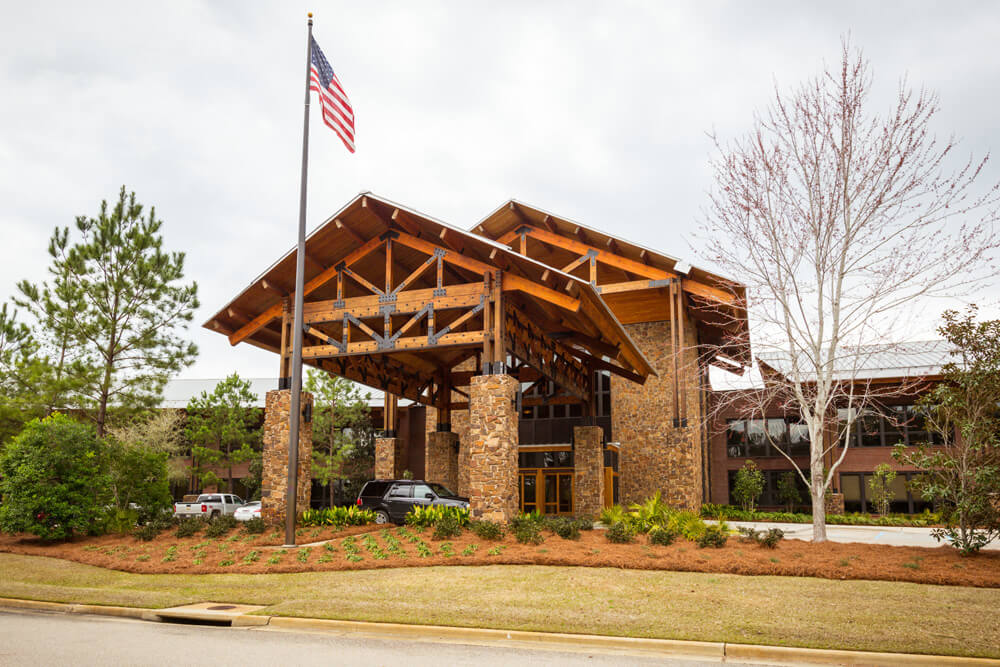
August 1, 2015
Sanderson Farms’ flight department has proved adept at optimizing its fleet and managing its rapid growth.

On a typical day, Sanderson Farms has five airplanes fueled on the ramp and as many as 40 passengers in the hangar by 7 a.m. It’s not unusual for those airplanes to fly six legs in a single day – completely full – moving employees and customers between Sanderson’s 21 chicken plants, hatcheries and feed mills across the Southeast.
The morning rush at Sanderson’s main hangar on Hesler-Noble Field (LUL) in Laurel, MS, is so busy that passengers line up by destination and put colorcoded tags on their luggage, so the bags are loaded on the right airplane and unloaded at the right stop.
At any given stop, a Sanderson Farms aircraft might pick up or drop off supervisors, training instructors, environmental inspectors, tax auditors or one of the company’s 12,000 other employees in 11 towns from Texas to North Carolina.
“There’s no way our people could operate as efficiently as they do without the aircraft,” said Robin Robinson, Sanderson’s director of organizational development. “The flight department’s not an expense; it’s an investment that gives a return many times over.”
As an investment, the company’s three Learjet 31As and three Gulfstream G150s are fully utilized. The six airplanes each fly more than 600 hours a year and are configured for maximum passenger loads. The G150s have a ninth belted lavatory seat that’s filled “all the time,” said Zane Lambert, manager of aircraft operations. “We use these airplanes like trucks. We have plant managers getting on board with muddy boots.”
Indeed, many of Sanderson’s employees have to travel regularly from its headquarters in Laurel. “These people fly as much as we do,” said Safety Manager Dan Bullard.
Staff Veterinarian Dr. David French, for example, visits chicken hatcheries and farms every week to ensure that the birds are healthy. “My job requires me to be in the field,” said French. “You don’t put chicken farms in urban areas, so none of our sites are near an airline hub. Without the flight department, every trip would take two extra days of travel.”

Managing Rapid Growth
The aircraft haven’t just enabled Sanderson employees to be more efficient, they’ve also given the company the ability to be more responsive to customers and maintain its competitive edge as it has grown.
“There’s no way our people could operate as efficiently as they do without the aircraft.”
“The flight department has grown just as the company’s grown,” said President & COO Lampkin Butts. “When you get bigger, you have to keep operating at the same high quality and low cost, or you lose your competitive advantage.”
Sanderson has acquired a new airplane roughly every three years since 2001, growing from one Beech Baron 58 and three pilots in the 1990s to six jets, 20 pilots and five maintenance technicians today. And now the department’s personnel are split into two shifts per day.
“It’s been a mindset change for us, to think of ourselves as a large flight department,” said Lambert. “My chief pilot, my director of maintenance and I started at the company with one airplane.”
To learn how other flight departments handle similar challenges, Lambert and his team have used NBAA’s resources to stay up-to-date on industry best practices.
For example, Sanderson Farms operates only two types of aircraft, so pilots aren’t constantly switching between different avionics platforms or spending an inordinate amount of time in recurrent training. To facilitate the transition between the two types of aircraft, Lambert and his chief pilot developed a second-in-command (SIC) program.
Newly hired pilots start as captains on the Learjets, while flying the G150s as SIC, before going for their G150 type rating. With flights rarely scheduled more than a week in advance, Sanderson has chosen to increase the number of in-house pilots rather than rely on contract aviators.
The department has also brought more maintenance functions in-house. With so many landings a day, they do all their own fueling and keep several racks of tires in the hangar. The maintenance staff replaces the tires on each airplane about once every three months.

The Right Technology for Rural Airports
Sanderson’s aircraft are not equipped with satellite communications, but all the airplanes have been outfitted to use the Wide Area Augmentation System (WAAS). “We go to so many remote, rural airports that are untowered,” said Lambert. Without WAAS, on IFR days the Sanderson aircraft wouldn’t be able to use the approach at Laurel and have to land at Hattiesburg.
“We use these airplanes like trucks. We have plant managers getting on board with muddy boots.”
Laurel also doesn’t have radar coverage, so Sanderson’s aircraft wouldn’t show up on Internet flight-tracking services until they’re 10 miles out. For safety’s sake, the flight department subscribes to a GPS-based service that can pinpoint the aircraft on the field and in the air.
While the GPS-tracking service shows where Sanderson’s aircraft are currently, Lambert and his scheduler, Laura Burns, also need to see everywhere the aircraft are going to be during the next two weeks. To do that, they have four 40-inch video screens mounted on the wall of the scheduling office that together display a calendar with every leg and passenger load for all six aircraft.
Through the company intranet, employees can look up the schedule. Flights must be approved by division directors, but once an aircraft is scheduled, anybody can contact Burns to reserve a seat. Requests come in all the time, often requiring a schedule change, adding a leg or deadheading.
“Our schedule changes constantly,” said Lambert. “I look at the big picture with Laura throughout the day and try to figure out how we’re going to make it work.”
With the “big picture” constantly in flux, there’d be no obvious way to divide up responsibilities with a second scheduler, but Lambert, Burns and flight department clerk Holly Dorsey all work together and back each other up. “Most of the time one of us will suggest something that’s more efficient,” said Lambert. “It helps to have multiple sets of eyes.”
Learn more about this NBAA Member at sandersonfarms.com.

Charity Begins at Home
In addition to flying employees and customers, Sanderson Farms also makes empty seats on its aircraft available free of charge to local people who need to travel for medical treatment. An estimated 200 seats a year are occupied by medical patients, and with three chicken plants in East Texas, MD Anderson Cancer Center in Houston, for example, is just a short hop from some of Sanderson’s regular destinations.
Sanderson Farms is not a member of any charitable flight network, and the company doesn’t advertise the medical transport service, but in a small town, community members hear about it through word of mouth.
“People in town will hear that we helped a friend get to MD Anderson and they’ll just call us,” said Zane Lambert, manager of flight operations. “The company leadership entrusts us to accommodate those requests whenever we can.”
Many Sanderson employees are proud of this service to the community, and some have received the same travel support when a need arose in their own families.
“For us, business aviation is a blessing,” said Steve Barkurn, manager of corporate sales. “It’s a good fit for our company, because we take care of business, and we take care of people.”

VIEW THIS ARTICLE IN THE APP
This article originally appeared in the July/Aug 2015 issue of Business Aviation Insider.
Download the magazine app for iOS and Android tablets and smartphones.


 International Business Aviation Council Ltd.
International Business Aviation Council Ltd.